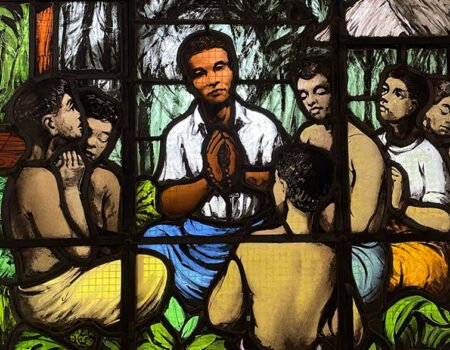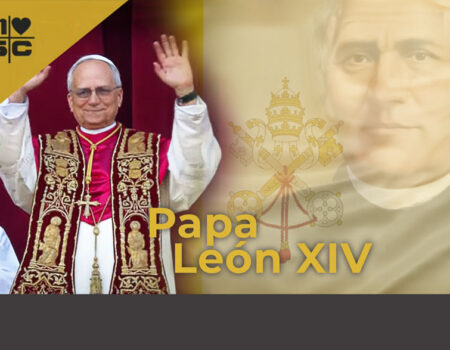The 200 Anniversary of The Birth of Jules Chevalier
Thursday April 25, 2024
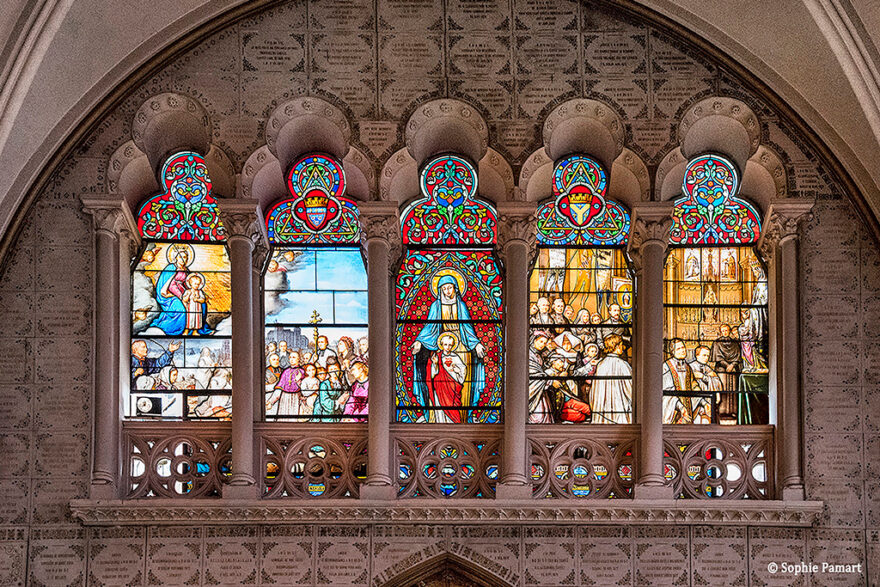
Todays celebration of Fr Chevalier’s 200th birthday invites us to talk about him: his work and his mission in Berry and throughout the world. I like to say that, thanks to him, the Church of Bourges is the Mother Church of more than thirty dioceses throughout the world because of the missionary expansion of the MSC Congregation.
I’m not the most expert to speak. André BOHAS, who is writing the POSITIO for the cause of beatification, is among us, but he told me that he was bound by a certain reserve and could not therefore lead our meeting. Perhaps we’ll call on him if we come to an impasse!
I’ve been asked to give a quick historical overview. I’ll do it in 5 points :
I. Birth… the path of the Providence that watches over us!
II. The discovery of the Sacred Heart of Jesus
III. The experience of priestly ministry
IV. Parish priest of Issoudun for 35 years
V. The missionary “ad gentès
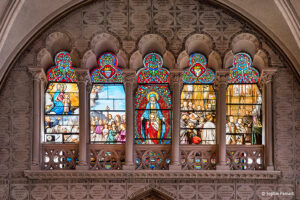
1. Birth… the path of Providence watching over us!
Chevalier was born on 15 March 1824 (200 years ago today!) in Richelieu, the town that the Cardinal had created as a French garden. Jean-Jules was taken in by a poor family, which is to say more than modest. He was the third child, 12 and 10 years younger than his brother and sister.
His mother sold vegetables on the square and his father was a small baker. One market day, she went to lay the bassinet at the foot of Notre-Dame des Miracles in the church. The priest, intrigued by the child’s cries, came to the family’s aid. Jules expressed his desire to enter the seminary, but in order to do so, he had to contribute to the boarding school, and his mother made him understand that this would not be possible. Jules decides to learn the cobbler’s trade to earn money and be able to pay for board at the seminary.
He was 17 when his father was offered a job as a forest ranger near Vatan. Mr Just hired him and paid for his education at the minor seminary in St Gauthier. This is how Jules came to Berry. His parents returned to Touraine, but Jules became a Berrichon with the Berrichons and continued his studies at the major seminary until ordination. Let’s remember his will in a decision that would guide his life: he wanted to be a priest. Let us also remember the place of Mary (Our Lady of Miracles) who welcomed his mother’s distress and her cries for help.
It seems that Father Chevalier entered life with an idea to which he devoted himself unreservedly and without return. It was a mystical idea, devotion to the Sacred Heart, and a very practical one, the founding of a Society of Missionaries of the Sacred Heart. His whole life was there. He is the man of an idea and a work. Having taken his place, so to speak, in the Sacred Heart, he would never leave it, whatever happened. Once, twice, his chapel or basilica may be closed for various reasons, but he will not despair of returning. He doesn’t like noise; he doesn’t do violence; but he doesn’t give up his rights; he goes slowly towards his goal, without anyone being able to divert him: he’s a gentle stubborn.
Florilège Chevalier on 29 October, Testimony of Abbé Belleville.
2. The discovery of the Sacred Heart of Jesus
At the major seminary in Bourges, the professors, Sulpician fathers, including M. Pélissier, echoed the mandate of Mgr De Villèle who, following the example of Marseille, consecrated the diocese to the Sacred Heart. In Marseille, Mgr de Bulsence, in order to eradicate the plague, consecrated the town to the Sacred Heart. Cardinal Aveline likes to say that Marseille was the first city in France to be consecrated to the Sacred Heart.
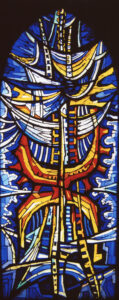
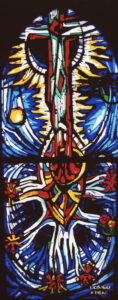
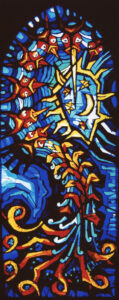
In his mandement, Mgr de Villèle said that the plague in Berry was more moral than physical. In his lecture, inspired as he was by the French school of spirituality, M. Pélissier showed that in the person of Christ, in his heart, God loves us in a unique and personal way.
Vatican II made this clear in Gaudium et Spes: “By his Incarnation, the Son of God united himself in some way to every human being. He worked with human hands, he thought with human minds, he acted with human will, he loved with a human heart. Born of the Virgin Mary, he truly became one of us, like us in every way but sin”. (GS n°22)
This discovery would be engraved forever on Jules Chevalier’s heart and would guide his whole life.
He became a “missionary” of this loving Heart. The discovery of the Sacred Heart of Jesus At the major seminary in Bourges, the professors, Sulpician fathers, including M. Pélissier, echoed the mandate of Mgr De Villèle who, following the example of Marseille, consecrated the diocese to the Sacred Heart. In Marseille, Mgr de Bulsence, in order to eradicate the plague, consecrated the town to the Sacred Heart. Cardinal Aveline likes to say that Marseille was the first city in France to be consecrated to the Sacred Heart.
In his mandement, Mgr de Villèle said that the plague in Berry was more moral than physical. In his lecture, inspired as he was by the French school of spirituality, M. Pélissier showed that in the person of Christ, in his heart, God loves us in a unique and personal way.
In studying the treatise on the Incarnation, our professor added a thesis on Devotion to the Sacred Heart. He developed it with great knowledge and piety. I transcribed it in its entirety. This doctrine was close to my heart and the more I understood it, the more I tasted its new charms. My teacher lent me the life of Blessed Marguerite Marie by Mgr Languet. This reading aroused in me a strong desire to become an apostle of this devotion, which Our Lord himself had given to the world as a powerful means of sanctification and which he wanted to see spread everywhere.
Chevalier, Notes intimes p.13 and Florilège Chevalier au 5 décembre.
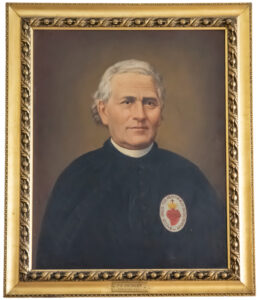
3. The experience of priestly ministry
In Ivoy-le-pré, then Chatillon-sur-Indre and finally Aubigny-sur-Nère… he became a vicar. It was in Aubigny that he discovered the secret of the mission in Berry. He assisted the parish priest in his last moments, who made this confession to him, which Chevalier wrote down in his intimate notes:
“My dear Abbé, I am going to die, but before I do, allow me to give you some advice. In the course of my long ministry, I gave myself too much to pious and devout souls; I devoted long hours to them in the confessional without much use, and this to the detriment of what I owed to men, young people and my other duties. It is a great fault that I reproach myself with pain. Alas, this fault is shared, I know, by a large number of parish priests. Too much attention is paid to women and not enough to men. Avoid this pitfall. Let your preferences be for the little ones, the poor, the ignorant and the neglected rather than for the great, the rich, the learned and the worldly”. I promised him; then I knelt down and his failing hand reached out to bless me”.
During this period, he received a letter from the archdiocese. Even before opening it, he declared that he accepted everything it contained. He was appointed to Issoudun. His seminary dream of being a missionary in a Issoudun was considered to be the most unworthy parish in the diocese. At the same time, the archbishop appointed Emile Maugenest, a friend from the seminary. They had not forgotten their project: to create a missionary institute in response to the prevailing de-Christianisation. They spoke to Abbé Crozat, the parish priest, who was like Simeon at the end of his tether. He saw in these two young vicars a possible renewal and promised to help them. It was decided to make a novena to the Virgin Mary, which would end on the day of the proclamation of the dogma of the Immaculate Conception (8 December 1854). Chevalier asked for a sign from heaven, which was given to him by a benefactor who promised a large sum of money to set up a missionary house.
In discussion with the archbishop, Jules Chevalier founded a missionary institute that would include the MSC, the Daughters of Our Lady of the Sacred Heart, the Third Order, now called the Our Lady of the Sacred Heart Fraternity, and the Issoudun ANNALES.
4. The parish priest of Issoudun for 35 years
Maugenest was taken away from him to become parish priest of the cathedral and later left the diocese to join the Dominicans. Chevalier lost a valuable ally… The archbishop told him: “If your work comes from God, it will continue even without Maugenest”.
There would be no shortage of difficulties, not least the first wave of expulsions. All the MSCs left Issoudun. Chevalier was able to stay because Mgr de la Tour d’Auvergne, a visionary, appointed Chevalier parish priest of Issoudun. Depending on the situation, he will be able to say that he is a priest of the diocese of Bourges or a religious.
Chevalier will be criticised internally and externally… many diocesan priests, no doubt out of jealousy of what is happening in Issoudun, will criticise him to the archbishop. Some thought he was abandoning the parish in favour of his congregation. His relations with the various archbishops were not always easy, but he always had great respect for the person and the office. Within the Congregation itself, he had to face several criticisms.
He was a builder… the place where we are today bears witness to this, and he was going to rebuild the parish church of St Cyr. More than that, he was a “builder of souls” if I can put it that way. Contrary to the accusations against him, he did not abandon parish life in favour of his foundation. Some texts shed light on these aspects; you have them on the sheet… I’ll go through them with you, not reporting on them.
Documentation summarised in CUSKELLY,
The man and his mission, Jules Chevalier, pages 266-268, 318:
Mgr Marchal succeeded Mgr de La Tour d’Auvergne. The first contacts with Father Chevalier were delicate, as the archbishop had received a large number of letters from priests in the diocese complaining that Father Chevalier was more concerned with the Sacred Heart and his personal works than with the parish.
When Bishop Marchal came to Issoudun for confirmation, he discovered that Chevalier and his missionaries had set up nearly twenty parish projects to proclaim the Gospel. The list is impressive:
We brought him (Mgr Marchal) about ten registers: that of the Blessed Sacrament, the Rosary, the Christian Mothers, the Children of Mary, the Youth Work, the Catechism of Perseverance, girls and boys, the Military Work, the Volunteer Catechists, the Domestic Work, General Communion for young girls on the first Friday of each month, for young boys on the first Sunday of the month, the Conference of St Vincent de Paul to visit and help the poor, the Work of the Sisters of the Sick, the Work of the Propagation of the Faith, of Holy Childhood, of St François de Sales. All these works were established in the parish by Father Chevalier or his missionaries. His greatness and his brother the Vicar General alternately examined these registers. They examined the church and its new reconstructions.
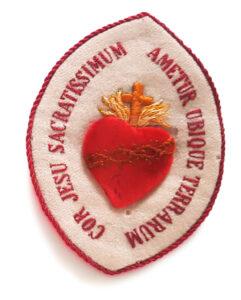
As used to be the case in the past, before giving confirmation, the Archbishop and the Vicar General questioned the children indiscriminately.
“Mgr brought four before him: two boys and two girls and questioned them about the whole catechism. After the questioning, His Grandeur rose and, after conferring with his brother, addressed the children and complimented them on their knowledge. I am obliged to admit,” said His Grandeur, “that the parish of Issoudun is one of the first in the diocese for the organisation and science of children. (Cuskelly p. 267).
Before leaving Issoudun, Mgr Marchal took Father Chevalier in particular and said to him:
“During my first visit, you must have found my way of dealing with you very strange. Well, I can tell you now that I had preconceived ideas against you and your parish administration; you must forgive me because I had received a whole series of letters from priests in the Diocese who slandered you indignantly. I have the names of these priests here,” he said, striking his forehead with his hand. Oh my Lord,” said Father Chevalier, “may Your Grandeur please forget all that. Humanity is like that. I’ve seen many others.
On another occasion, Fr Chevalier proposed the name of a priest to Mgr Marchal so that he could appoint him canon of the cathedral. Here is Bishop Marchal’s response:
“I’ll tell you one thing, my dear Father: I’m not that keen on appointing canons, and even less so the one you recommend, because he’s one of those who wrote to me against you when I was appointed Archbishop of Bourges. – Well, because of this, Monseigneur, I recommend him doubly to Your Grandeur and to his benevolence. She could not please me more than by giving him the mosette for services rendered to the diocese”.
There were also MSCs who denounced him to the archbishop, Mgr Boyer. After his death, his auxiliary, Mgr Bardel, who had just been appointed Bishop of Sées, came to see Father Chevalier and told him:
“My Reverend Father, not all your fathers are your friends. Before I leave Bourges, I am bringing you all the letters they wrote against you to Mgr Boyer. I did not want this file to remain in the Archbishop’s archives. I’m bringing them to you. You will be able to read them and see what you are accused of”. The good Father Chevalier knew all his enemies, even those who committed the indignity of slandering him about his morality. [He took revenge on his enemies by receiving them with kindness and charity. He invited them to his table and treated them better than his friends. I saw several at his table who were far from suspecting that he had in his possession their letters of denunciation to Cardinal Boyer. When he read this famous file, he simply repeated “may the Good Lord forgive them”. (Cuskelly, p. 318-319)
5. The missionary ad gentes
As Mgr Plateau said at the diocesan synod: “Let’s not let the mission shrink to the geographical limits of Berry”. Chevalier responded to the Holy See’s request to go to Melanesia and Micronesia… present-day Papua New Guinea and the Republic of Kiribati in the heart of the Pacific (I think Mgr Beau would say that we shouldn’t encourage self-centredness).
We have his admirable reply to the Holy See on 16 april 1881…
Father Chevalier accepted, even though the foundations of his young congregation were not yet fully in place. This was to be the development of the mission that still characterises us today, beyond Berry. It should be remembered that the seminary published the ANNALES de la propagation de la foi, which was an opening to the universal mission.
“Following Mary’s example, we have made known with simplicity our notorious inadequacy and our legitimate concerns. Since, in spite of this sincere admission, Eminence, you say to us like the Angel: ‘Do not be afraid; accept the offer made to you, the Spirit of God will be with you, and the virtue of the Most High will cover you with its shadow’, we bow down respectfully, and our humble congregation responds with the Virgin of Nazareth: ‘Behold the handmaid of the Lord, let it be done to me according to your word. Letter from Father Chevalier to Cardinal Simeoni, Prefect of Propaganda.
In this way, Father Chevalier’s motto took shape and became a reality: LOVE THE SACRED HEART OF JESUS EVERYWHERE.
Daniel Auguié, msc
Photos: Sophie Pamart



